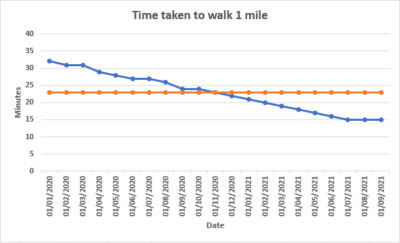The three types of measures we use in improvement work are called outcome, process and balancing measures.
- Outcome measures reflect the impact on patients or staff and show the end result of your improvement work eg .rate of infection cases.
- Process measures reflect the way your systems and processes work to deliver the outcome you want. Examples would be % compliance with hand washing
- Balancing measures reflect what may be happening elsewhere in the system as an unintended consequence of the changes you make. This impact may be positive or negative. When presented with change, people can be heard to say things like, “If you change this, it will affect that.” Picking up on the ‘thats’ can lead to a useful balancing measure
Collecting data will be an important element of your project, before you start making any changes you should collect some data, this is known as a baseline. Here are some tools that will help you analysis the data.
Run charts
 Small amounts of data can be collected regularly and complied into ‘run charts’, to look at review the impact of a change over a period of time. For example:
Small amounts of data can be collected regularly and complied into ‘run charts’, to look at review the impact of a change over a period of time. For example:
Run charts focus on variation. There is an important distinction between these and snapshot audits:
- A run chart acts a bit like a camcorder, showing you every up and down.
- Snapshot audits are more like a camera, taking a picture of what things look like at just one point in time.
7
To show that things have improved you need to show the things that have changed, and that the change is not a one off. You must consider whether the change has been sustained. Run charts allow you to see if this has happened.
Learn more about measurement for improvement here:
- The NHS How to Guide on measurement for improvement
- A-Z of Measurement
- Mike Davidge on measurement for improvement
- IHI: Building Skills in Data Collection and Understanding Variation
- Whiteboard: Static vs Dynamic Data
- Whiteboard: Run Chart 1
- Whiteboard: Run Chart 2
With thanks to West of England AHSN for allowing us to share this information.


